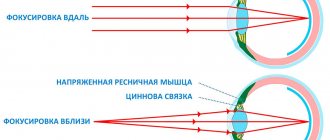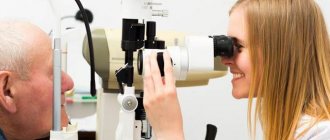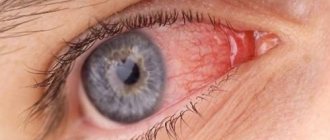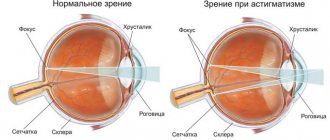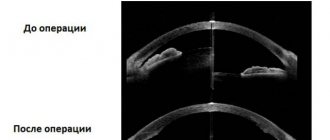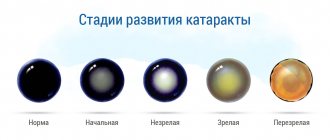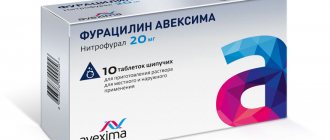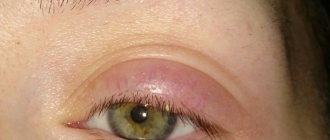Causes of the disease
The occurrence of presbyopia is associated with a violation of accommodative functions.
By the age of 30, this ability is lost by half, and by 60 it practically disappears. The main reasons for the degradation process are the following factors:
- Sclerotic changes in the lens of the eye. In this case, the capsule and core become denser and lose their elasticity.
- Dystrophy of the ciliary muscle. Muscle fibers are replaced by connective tissue. Because of this, the muscles stop contracting normally.
- Diseases associated with metabolic disorders (diabetes mellitus, hypovitaminosis and others).
- Inflammatory processes with blepharitis, keratitis or conjunctivitis.
- Surgical interventions.
- Injury to the visual organs.
- Excessive strain on the eyes, which may be specific to professional activity.
Working with objects that are close to one another becomes difficult with presbyopia. This is due to the distance from the eyes of the point of clear vision. In this case, the ability of the lens to increase the radius of curvature deteriorates. If presbyopia occurs at an early age, it can lead to the development of glaucoma.
Initial stage of the process
As is known, the eye accommodates by changing the curvature of the lens, suspended from the ciliary body by means of special ligaments. When the eye looks into the distance, the ligaments of Zinn are in a tense state, giving the lens a flat shape.
When viewed close, the muscles of the ciliary body tense, the tension of the ligaments weakens, and the lens, due to its elastic consistency, takes on a convex shape.
Normally, all these processes are regulated by the autonomic nervous system. As a rule, with a spasm of accommodation, an increase in the activity of the parasympathetic nervous system is observed, which causes a prolonged contraction of the muscles of the ciliary body. As a result, the eye is constantly tuned to examining nearby objects, but sees poorly in the distance.
Treatment of pathology with glasses
Presbyopia, even though it is a natural process, creates not only visual discomfort for a person, but also makes unpleasant adjustments to the usual way of life. This applies to all people without exception, both experienced bespectacled people, and even those lucky ones who have never suffered from refractive errors. As for the latter, they simply purchase reading glasses with positive diopters, and use them only when working at close range. But people who suffered from visual dysfunction at a young age have to face more serious problems. For example, patients diagnosed with myopia, when working close, could either take off their glasses altogether or change them to weaker ones. As for people suffering from early farsightedness, at the first symptoms of presbyopia they may complain that their plus glasses are no longer doing their job well.
It is clear that such people have to use different glasses in order to see well at different distances. But fortunately, modern ophthalmology knows how to deal with age-related pathology. She offers these patients a completely new type of glasses. On such optics, the lenses are divided into two segments, each of which has a different refractive power. It is this bifocal structure that allows a person, without changing glasses, to see equally well both at close and at a distance.
Risk factors for developing presbyopia
There are several theories regarding the origin of presbyopia. The first suggests that this is not a disease at all, but a form of farsightedness. According to another version, accommodation disturbance is associated with poor nutrition and a lack of vitamins B and C. However, the risk group for presbyopia includes persons who meet the following criteria:
- Age exceeding 40 years.
- The presence of untreated diseases associated with impaired accommodation.
- Female.
- Attachment of daily activities to uncontrollable loads on the visual organs.
- Past infections.
- Taking certain medications.
- Living in a hot climate.
- Poor diet.
The differences in forms of farsightedness can be seen here:
Prevention of farsightedness
Farsightedness, like myopia, is one of those diseases that is easier to prevent than to cure. This is explained by anatomical changes in the structures of the eye, which are sometimes impossible to correct. That is why the prevention of farsightedness and myopia is of great importance for patients of all ages. Compliance with certain rules will slow down the development of the disease and, with a high probability, avoid dangerous complications.
The first and main preventive measure is the correct correction of farsightedness with glasses or lenses. This helps reduce tension in the eye muscles and reduce visual discomfort.
Working at a computer, reading for a long time, any actions involving looking at small details must be combined with short-term - about 15 minutes - rest, or switching to another type of activity. A sufficient level of illumination of the workplace, preferably natural light, is especially important for the prevention of farsightedness in adults after 40 years of age. You cannot work at a computer in the evening in an unlit room, with a pronounced contrast between a bright screen and a dark room.
It is necessary to periodically visit an ophthalmologist to identify possible abnormalities.
Prevention of farsightedness after 40 years necessarily includes eye exercises. The developed exercises improve blood circulation in the structures of the eye and periorbital region, and relieve muscle strain.
No less important is a healthy lifestyle, good nutrition, a positive attitude, the opportunity to get enough sleep, and walk in the fresh air.
Prevention of farsightedness in children is especially important in case of hereditary predisposition. I advise parents to establish a clear daily routine for their child, alternating visual exercise and active physical rest. The child should spend more time outdoors and be sure to play sports. For reading, writing, and doing homework, it is necessary to ensure a comfortable, correct posture, and take care of good lighting in the workplace. The diet should consist of nutritious, high-quality foods rich in vitamins and microelements. Regular exercises to prevent farsightedness have a good effect.
Gymnastics for the eyes
Systematic exercise for the visual organs helps speed up the healing process. The main exercises are:
- frequent blinking for several seconds;
- tightly closing the eyes followed by muscle relaxation (performed within a minute);
- rotation of the eyes clockwise and counterclockwise;
- looking up, down, right and left twice.
Important! It is worth immediately warning the child that gymnastics will have to be done regularly. This is the only way it will bear good fruit.
It is very good if your child gets into the habit of doing at least one useful gymnastics exercise every hour. The full course should be done at least once a day. Even after eliminating false myopia, this habit will help maintain good vision.
Symptoms of presbyopia
Presbyopia is a condition that affects both eyes. It can be identified if the following signs are present:
- Small text becomes increasingly difficult to see (especially in low light).
- The contrast of visible text is reduced. So black color is displayed as gray.
- Fatigue quickly when working with small objects.
- Headaches begin.
- A drowsy state is noted.
- There is a feeling of discomfort in the eyes.
- In most cases, vision improves if you turn on bright lighting.
Presbyopia is characterized by the symptom of “short arms”. This is manifested by the fact that it is not enough to place the text at arm's length to clearly distinguish what is written.
Types of Presbyopia
Presbyopia can be divided into several groups based on its manifestations:
- Presbyopia with emmetropia. The disease is typical for people 40-45 years old.
- A disease with subjective manifestations. Deviations develop from the age of 40 until the age of 65, when the accommodation value is equal to zero. In this case, the onset of the disease is dated from the time from which the nearest point of clear vision was located at a distance of 30 cm from the eye.
- A disease in people with farsightedness (hyperopia). It appears after 30 years. At the same time, the patient sees poorly both near and far.
- Illness in nearsighted people. The development of presbyopia, which occurs in those who suffer from myopia, occurs unnoticed. In addition, if the vision deviations were moderate, the patient may even refuse glasses. This is due to the superposition of one symptom on another, as a result of which the indicators of myopia and farsightedness compensate for each other. But there are exceptions:
If a person is diagnosed with presbyopia before the age of 40, he needs to start treatment as early as possible.
What is accompanied by a spasm of accommodation?
Symptoms of accommodation spasm are as follows:
- The images split into two.
- Visual acuity decreases.
- A person feels a burning or stinging sensation in the eyes.
- By placing objects close to the eyes while working, a person quickly gets tired.
- A person experiences pain in his temples.
- The eyes become red and swollen.
- The production level of the lacrimal glands increases.
- Head and eyeballs hurt.
In adults, a spasm of accommodation can be determined by their facial expressions. They squint and blink frequently. There is asymmetry of the nasolabial folds. If a person’s conjunctiva turns red and his pupils react poorly to irritants, this also indicates an illness. Children during accommodation spasms are characterized by irritability and learning problems.
A spasm of accommodation occurs over a period of a couple of days to several years. Gradually it develops into myopia. In some patients, the pathology is accompanied by vegetative-vascular dystonia, emotional instability, finger trembling and other abnormalities.
Diagnosis codes according to ICD 10: classes of diseases according to the international system
Depending on the mechanism of development of hyperopia, a distinction is made between axial or axial hyperopia, associated with a shortened PZO of the eyeball, and refractive hyperopia, caused by a decrease in the refractive power of the optical apparatus. In the event that the existing refractive error is compensated by the strain of accommodation, they speak of hidden farsightedness;
if self-correction is impossible and it is necessary to use convex lenses, hypermetropia is regarded as obvious. With age, latent farsightedness usually turns into overt hyperopia. Depending on age, natural physiological farsightedness in children is distinguished, congenital farsightedness (with congenital weakness of refraction), and age-related farsightedness (presbyopia).
The complete ICD-10 document includes introduction, classification, instructions for completing the perinatal mortality certificate, regulatory definitions, nomenclature provisions and other sections. Let us describe the structure and principles of constructing the classification.
- epidemic diseases;
- constitutional or general diseases;
- local diseases grouped by anatomical location;
- developmental diseases;
- injuries.
Each class code is a pair of codes that define the range of codes included in the class.
The class code is presented in the form: letter two numbers – letter two numbers. For example: A00-B99, C00-D48, K00-K93.
ICD-10 classes are divided into homogeneous blocks. Block code in the form of a letter and two numbers or by indicating a range. For example: B99, C00-C97, K00-K14.
Type code: letter two numbers. For example: C02, K00.
Subcategory code in the form: letter two numbers. number . The code uses a dot followed by a number that specifies the disease for a three-digit category. For example: C02.1, K00.3.
General example. Let's take a closer look at the chain H60-H95 H80-H83 H80 H80.2
mkb10.su
Sidorenko glasses
This is an innovative eye simulator that has a positive effect on them through a gentle vacuum massage. In appearance, it is similar to swimmers' goggles, only from the inside the lenses are equipped with small hyperbaric chambers that operate on the principle of a gentle massage of the eyes with a vacuum, while simultaneously capturing the periocular tissues. The glasses emit intermittent light of a different spectrum, which provokes constriction and dilation of the pupil. This helps relax the eye muscles.
When exposed to light pulses, the pupil rhythmically contracts and dilates, its actions resemble the operation of a pump, with the help of which excess intraocular fluid is pushed out through natural pathways. As a result, the eye is supplied with fresh substance enriched with nutrients. It has the most beneficial effect on vision.
Sidorenko's glasses are absolutely safe, as proven by the long-term practice of eye clinics for children (more than 20 years), where the device is used to eliminate false myopia even in the youngest patients.
The glasses use the principle of exposing the eye to pulses of the most useful colors. Red increases blood circulation and gas exchange in tissues, yellow helps improve nerve conduction, restores the visual system, green and blue help the eyes relax.
After using Sidorenko’s vacuum glasses, blood supply and metabolism in the tissues of the ocular structures improves, the hydrodynamics of the eyes improves, the stagnation of venous blood decreases, the permeability of cell membranes increases, so more oxygen enters the tissues, and the therapeutic effect of medications is prolonged due to their accumulation in the ocular structures.
Contraindications to the use of medical glasses are:
- serious mental disorders;
- malignant tumors of various localizations;
- neurological disorders;
- hemorrhages in the eyes;
- retinal disinsertion.
Already after the first use of therapeutic glasses, their positive effect is noted. But for a lasting ophthalmological effect, 10 sessions of 7 minutes each are required. The procedure is carried out once 2-3 hours before bedtime. After using glasses, you should not watch TV, play on a computer, tablet, or generally try not to strain your eyes. Breaks between procedures are allowed, but they should not exceed 3 days. The intervals between courses are 3 months.
Diagnosis of presbyopia
A thorough examination helps the ophthalmologist prescribe appropriate treatment. The following methods are used to diagnose presbyopia:
In accordance with the results obtained, the doctor draws up a clinical picture and prescribes treatment.
How is presbyopia treated?
There are many treatments for presbyopia. To begin with, the patient is prescribed vitamins and drops, the purpose of which is to hydrate and relieve fatigue. If the treatment does not produce effects, correction is applied. Most often, monofocal glasses are used for this. In extreme cases, the doctor resorts to surgical intervention. Its goal is to provide conditions that will contribute to the development of “monovision”, or to introduce implants that replace damaged parts of the eye.
Intracore
Intracore is a technique for using a femtosecond laser. The essence of its effect is to change the curvature of the cornea. During this treatment, 5 rings of concentric action are formed in the corneal axis. In this case, gas bubbles are formed, increasing the thickness of the rings, thereby, as it were, lifting the center of the cornea. This method not only improves near vision, but also preserves the ability to see clearly at a distance. Its advantages are that the cornea is protected from infection and loss of biochemical properties.
Inlai
Corneal inlays are ring-shaped tabs with a small hole in the center. There is no need to remove layers of the cornea. If necessary, inlays can be removed without any consequences. These tabs improve vision. However, they can cause dry eye syndrome or glare in front of the eyes.
Another correction method is conductive keratoplasty. During the procedure, radio frequency energy is used. Its advantages are that there is no need to use laser beams. At the same time, there is no need to remove the cornea or excise its tissue.
Eye exercises
A set of exercises will help restore your vision at home. It will be effective if you devote time to this at least twice a day. These can be five-minute eye movements in different directions and in a circle, accompanied by bending, squatting and moving the body. In this case, you need to monitor your breathing. This load will help restore blood circulation.
Folk remedies
Folk remedies are used as a preventative measure along with the main treatment. They are used in the form of decoctions. Eyebright, strawberry leaves, plantain, marigold, cornflowers and other medicinal herbs have a good effect. Mixtures of aloe or rose hips with honey have a complex effect. They not only improve vision, but also strengthen the immune system.
Gymnastics for the eyes
Systematic exercise for the visual organs helps speed up the healing process. The main exercises are:
- frequent blinking for several seconds;
- tightly closing the eyes followed by muscle relaxation (performed within a minute);
- rotation of the eyes clockwise and counterclockwise;
- looking up, down, right and left twice.
Important! It is worth immediately warning the child that gymnastics will have to be done regularly. This is the only way it will bear good fruit.
It is very good if your child gets into the habit of doing at least one useful gymnastics exercise every hour. The full course should be done at least once a day. Even after eliminating false myopia, this habit will help maintain good vision.

